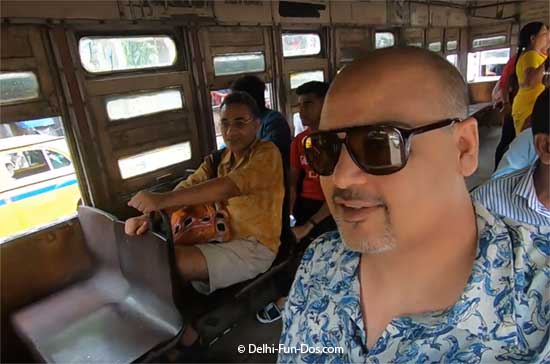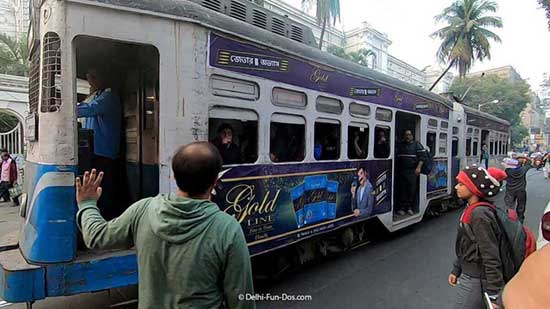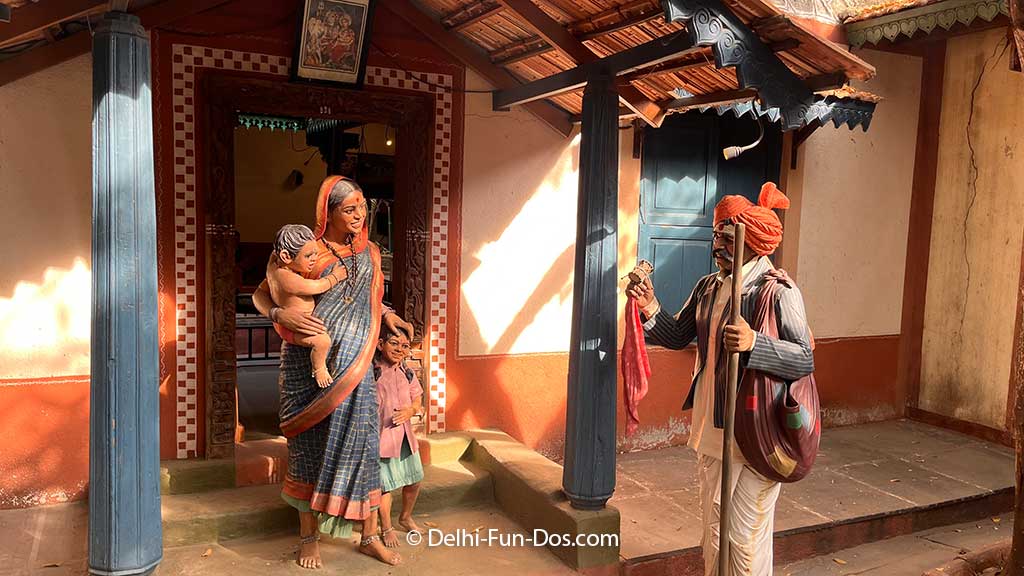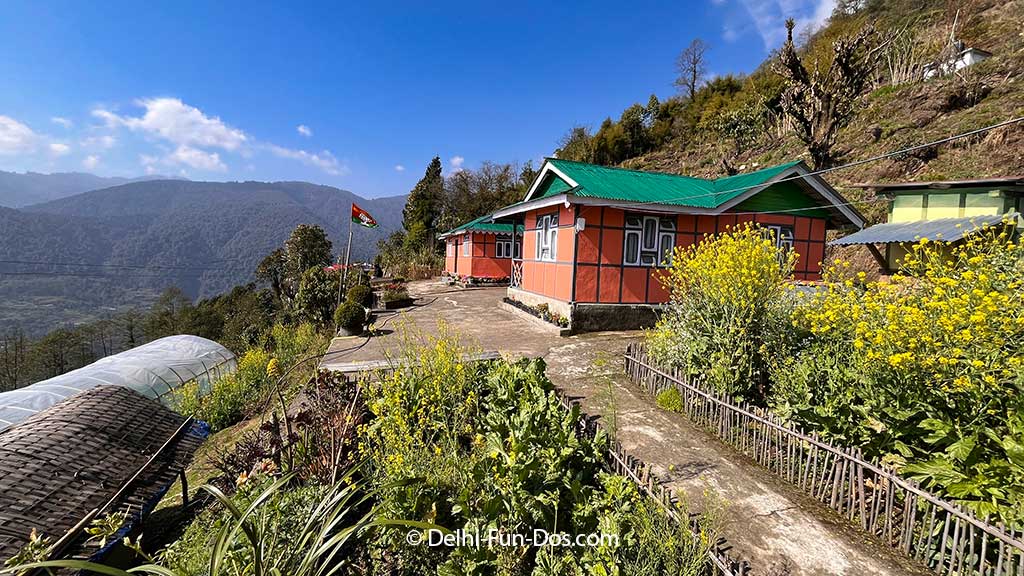Kolkata, a city where history lives in the everyday…from its iconic yellow taxis to the hustle of its old streets, there’s a rhythm here that’s unlike any other. But there’s one sound that has been slowly fading, the soothing clatter of the tram… a heritage that’s been part of Kolkata for 155 years.
Contents
The History of Trams in Kolkata
The two Ts of Kolkata – Tagore and the tram happened almost at the same time. While Rabindranath Tagore was born in the year 1861, the first tram strutted on the streets of Kolkata in 1873. We say strutted because these were horse-drawn tram cars with two carriages.
PIN IT FOR LATER READ

As time progressed and technology evolved, Kolkata’s trams were modernized. In the early 20th century, electric tram cars replaced horse-drawn ones, allowing the iconic two-carriage design to remain intact while providing a more efficient and modern service.
Interestingly, trams still had 2 carriages. A tradition of “first class” and “second class” carriages existed in these trams, with the first class priced higher for a more exclusive ride. What we heard from our parents is that the price for travelling in the first class of the tram was significantly higher than the second class. The price gap has been phased out now
Yes, Kolkata is the only city in India that still has trams, or should we say ‘had’. This slow, charming mode of transport, that once defined the pace of this city, is now almost at the end of its line.
Kolkata Tram Ride

Expecting this to happen one day or the other, we took a few rides on one of these heritage trams during our Kolkata visits around Durga Puja. There was something magical about watching the world go by at a slow, steady pace…as you glide through the chaos of the streets. Unlike the rush you’d find in other metros, the tram had this unique vibe…passengers heading to work, a vendor selling packets of snacks, and the conductor casually punching tickets—it’s a slice of life that feels like it belongs to another time.
The trams were never about speed, but more about the experience. Gliding through the old roads, weaving through cars, rickshaws, and crowds. They were a part of Kolkata’s pulse, taking you from the heart of the city to its quieter corners, in their own sweet time. It was the most dynamic dating option in the city in the last century. When you are in the tram, romance and nostalgia embrace you.
Kolkata Trams to be Discontinued
But like all good things, the era of the tram is coming to an end. The state government has decided to discontinue the service, barring just one stretch – Esplanade to Khidderpore.
For the people of Kolkata, this decision is bittersweet; it feels like losing a friend who has accompanied the city for more than a century and a half.

For those who grew up with the steady, familiar sound of trams in the background, the gradual phasing out of this mode of transport closes a chapter of their lives. The trams are more than just vehicles; they’re a reminder of simpler times, a piece of the past that refuses to let go. As the tracks are gradually removed or left unused, trams transform into a symbol of nostalgia—a testament to Kolkata’s resistance to rapid change.
To Calcuttans who have lived with trams, it’s the end of an era.
Where can you see Kolkata Trams Today?
Is there a way forward for Kolkata’s trams?
While trams may not be the most efficient mode of transport, it is a non-polluting vehicle. Therefore, there is more than one reason to maintain trams. It is no surprise the civilians are making efforts to keep their legacy alive.
Some initiatives include turning trams into unique restaurants where diners can enjoy a meal while the tram takes them on a slow journey through the city. This concept combines nostalgia with novelty, allowing visitors and locals to experience a part of Kolkata’s history while enjoying a meal on wheels.

Moreover, passionate residents of Kolkata, or “Calcuttans,” are making attempts to prevent the complete disappearance of trams. Legal petitions have been filed in Kolkata’s courts as a final stand to preserve what is left of the tramway. This battle for preservation reflects the deep-rooted connection people have with this mode of transportation.
It’s more than just a transit option; it’s a cultural artifact, a living memory of a time gone by, and many are reluctant to let it go without a fight.
Also Read: Discover Kolkata: A First-Timer’s Ultimate Food and Travel Guide
The Future of Kolkata’s Trams: A Timeless Memory
As Kolkata inches towards speed, the fading trams become a bridge to its history. Kolkata may one day have trams only in stories or cinema or memories.

Whether or not trams survive the push for more efficient transportation, the city’s ethos, marked by its love for preserving the old alongside the new, will carry the memory of trams forward.
Trams may soon be a thing of the past, but they’ll always be part of Kolkata’s soul. And if you ever visit the City of Joy, do yourself a favour—take a ride in history, because once they’re gone, they may never come back.




Sad to see those iconic trams fading into history. Thanks for the back story on these trams in India!
I can’t wait to check this place out, I just can’t believe I didn’t know if it in the first place!
What an amazing place! It’s like stepping back in time. I really love the vibe.
Oh no, I’m sorry to hear they’re in the danger zone. The community from the tram is real, I’m sure!
It’s sad to think they’re disappearing,.Turning them into restaurants is a lovely idea though! I hope the foodies and lovers of Kolkata manage to save them. It’s not just about getting from point a to b, it’s about the history and stories these trams hold.
This is an interesting journey and experience, I have never been to these cities before but heard that its good places to visit. Enjoyed reading through your article.
I’m sorry to hear that the trams are being discontinued, but I believe the government has a good reason to do so. I agree with you that it is sad to lose something that has been a part of our lives.
Anyway, whatever prevails, I hope the best for the Calcuttans.